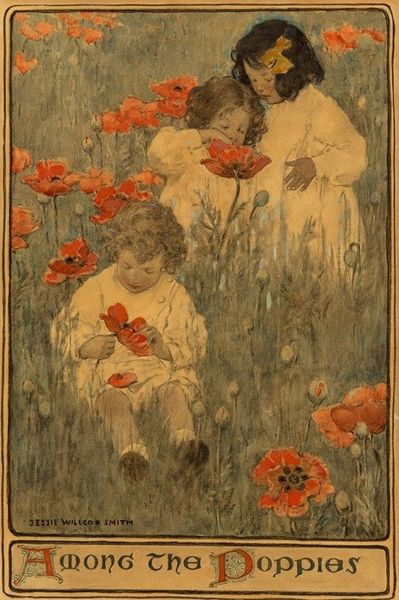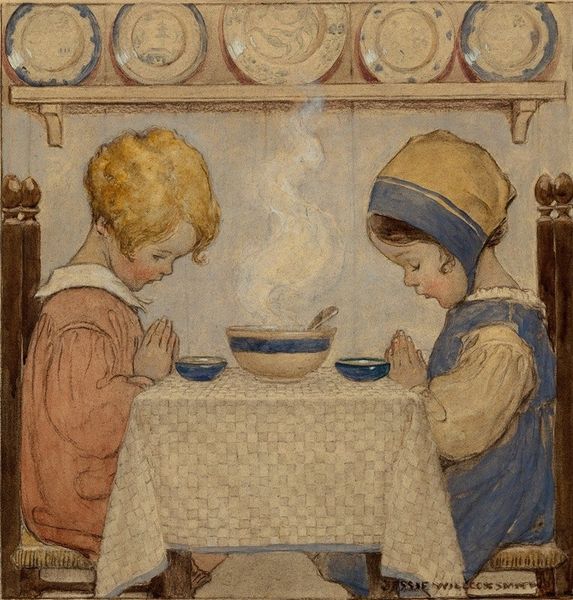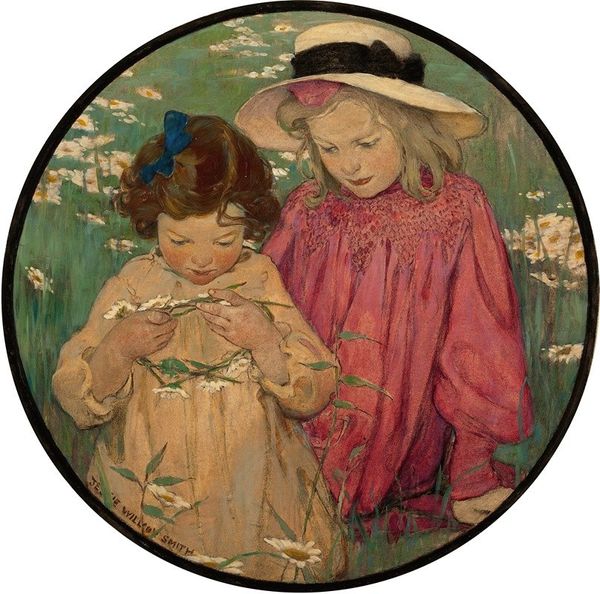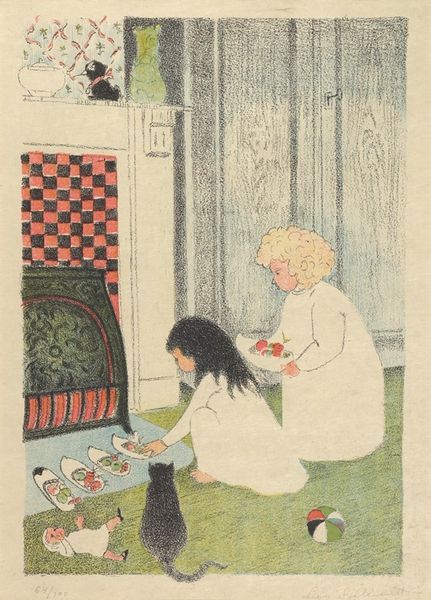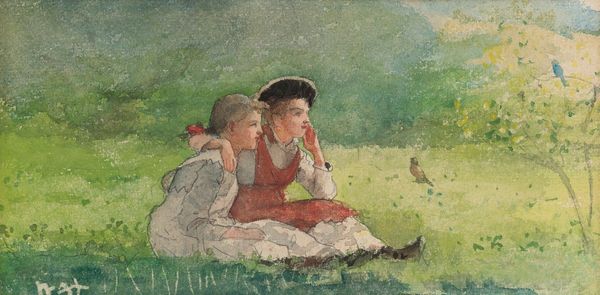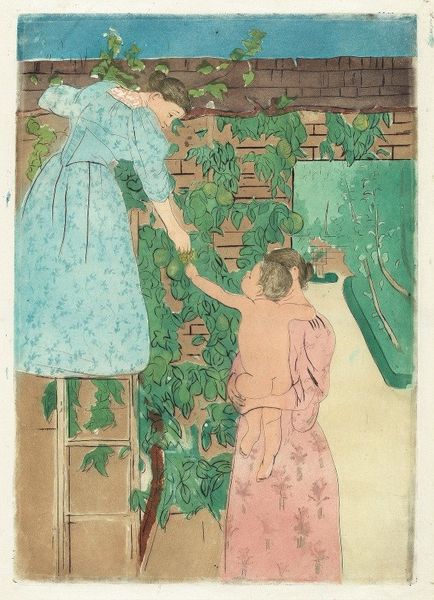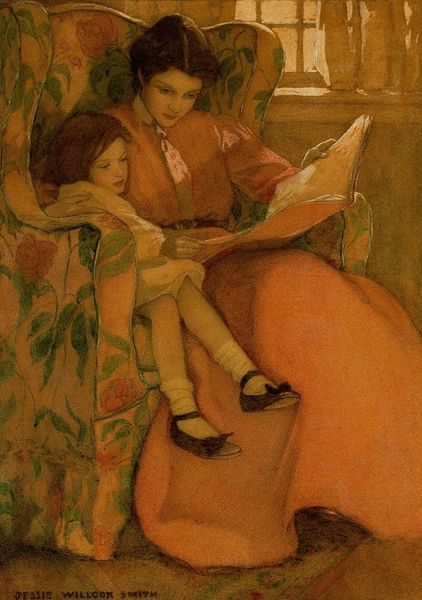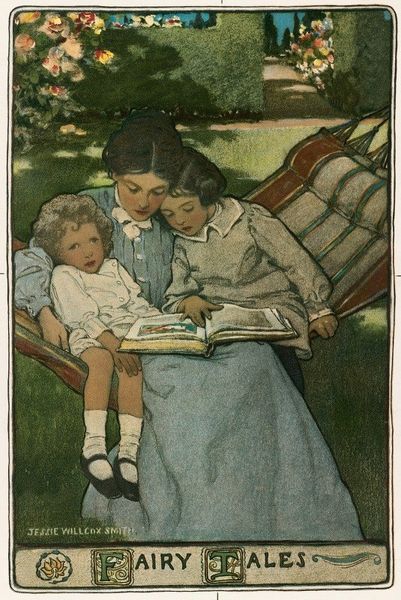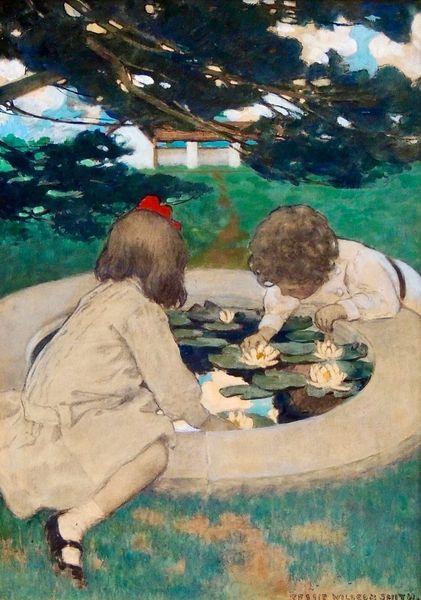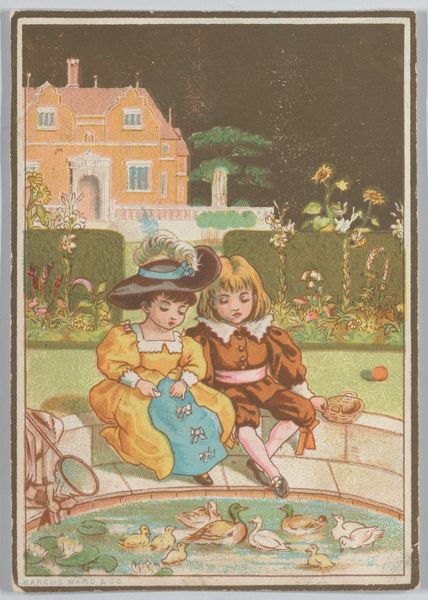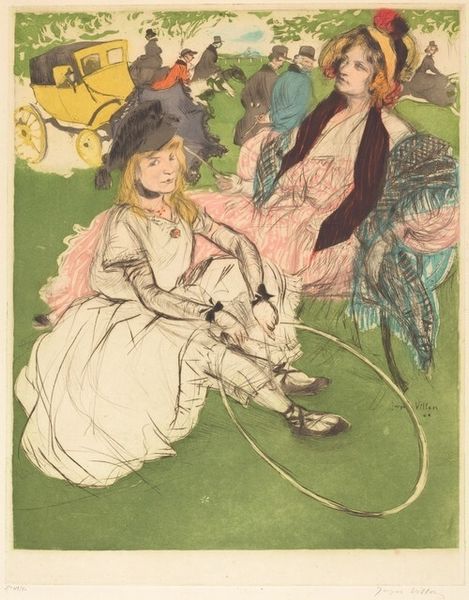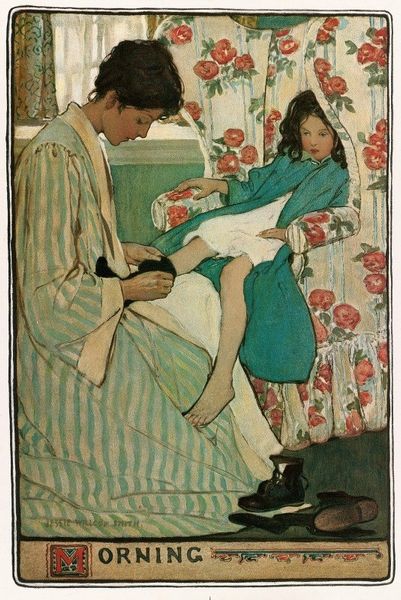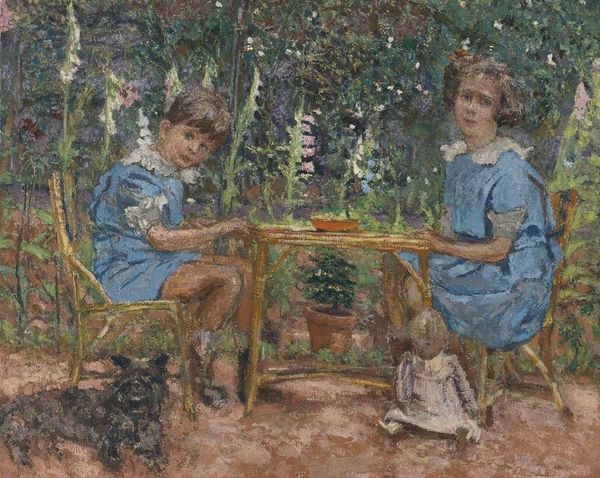
Copyright: Public Domain: Artvee
Curator: This is "Five O’clock Tea," a watercolor from 1903 by Jessie Willcox Smith. What's your initial impression? Editor: My first thought is the incredible innocence. The whole scene is just bathed in gentle, warm light, as though nostalgia itself were an artist’s pigment. Curator: It's interesting you say that, because Willcox Smith was actually a prominent illustrator, famous for capturing children and domestic scenes for magazines and books. Editor: It’s fascinating to me how this idealized image of childhood aligns with social expectations of early 20th-century girlhood. You see the tea set, the muted colors – it all speaks to domesticity being ingrained early on. Curator: I see your point, and it’s true that gender roles were being heavily reinforced then, but there's a playful, almost rebellious spirit in her subjects. Smith captures childhood wonder so beautifully, as though these aren’t future homemakers, but rather children engaged in a moment of their own making. I suppose they are just having fun... Editor: I wouldn’t deny that—it just seems crucial to consider the socio-political context within which that “fun” exists. These images circulated widely, helping solidify certain norms about childhood and domestic life. Was Smith challenging conventions or perpetuating them? Curator: Maybe a little of both. As a successful artist at the time, Smith defied gender expectations herself. Editor: Absolutely. Considering she and her life partner, Elizabeth Shippen Green, created a sort of utopian artistic existence in what was called the Red Rose Inn community and later Cogslea, where they centered art and collaboration… Well, you have to ask yourself whether such subversive potential informed her larger work. Curator: It is intriguing to wonder. Her dedication to capturing children is interesting when viewed as a political gesture. Editor: I agree. Perhaps celebrating childhood's fleeting independence offered Smith a way to subtly disrupt the status quo, challenging, in its own way, restrictive societal expectations of women at the time. It invites you to wonder how social dynamics operate subtly. Curator: I really like how you helped me consider the relationship between children and broader social constructs of her era. Now I feel more perceptive. Editor: And your ability to hone in on Smith's playful rebellion just brings a whole new layer to how I interpreted her artwork. It is fascinating, isn't it, what stories and insights an artwork can spark.
Comments
No comments
Be the first to comment and join the conversation on the ultimate creative platform.
